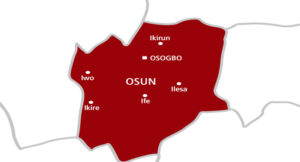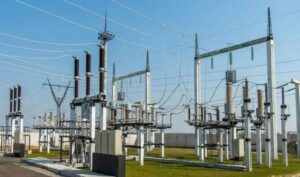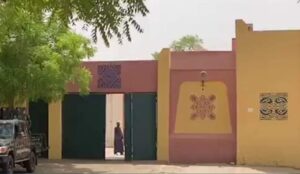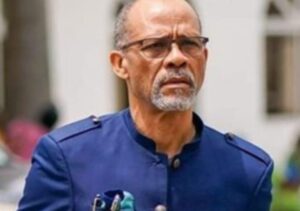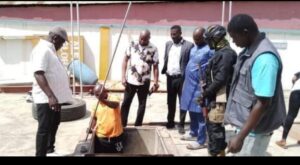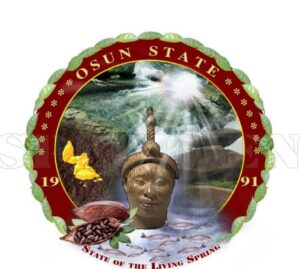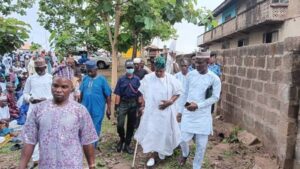In the heart of Ila-Orangun, Osun State, there’s an old story that locals recount with a mix of fear and awe. The central figure of this tale is Baba Enílé Gogoro, a man whose name translates to “The man with the storey building.” This name, however, conceals a more sinister reality.
Baba Enílé Gogoro was reputed to be a man of immense power, wielding traditional and spiritual forces that many could only whisper about. His storey building was the stuff of local legend, not for its height but for its peculiar design—a storey building with no stairs. He used a ladder to ascend and descend, and it was said that no one else was allowed near his private domain. This mysterious architecture was only the beginning of his unsettling story.
Known throughout the community as an embodiment of wickedness, Baba Enílé Gogoro earned the title of “OlÓÒGÙN ÌKÀ,” which means a practitioner of malevolent magic. His deeds were feared far and wide, especially after an incident involving a man named Alade. Alade, who happened to urinate in Baba Enílé Gogoro’s backyard, faced a gruesome fate. Baba Enílé Gogoro collected the urine and, using his dark arts, ensured that Alade died on his way home. This led to the grim saying, “ÀLÀDÉ ATÒ MON DÉLÉ,” which translates to “Alade, the one who urinated and never returned home.”
The tales of Baba Enílé Gogoro’s misdeeds were numerous and horrifying. He was linked to various calamities, from violent attacks to inducing madness with a potency that outmatched even the strongest psychotropic substances. His house in Isedo, adjacent to the communal field in Ila-Orangun, was a place no one dared to approach, even casually. His malevolence was so widespread that it seemed to touch every corner of the community.
One particularly notorious act was his poisoning of a river on his farm, an act of retribution against students from the College High School Ila-Orangun who frequently cut through his farm. His cruelty knew no bounds, making him a veritable community menace.
The people of Ila-Orangun, desperate to rid themselves of this terror, eventually devised a plan. In a time before modern conveniences like indoor toilets were common, external toilets were the norm. The youth of the community, determined to end Baba Enílé Gogoro’s reign of terror, began their strategy on a sweltering afternoon. They waited until Baba Enílé Gogoro used the toilet and then collected his feces.
Their plan was to place this feces under Baba Enílé Gogoro’s favorite tree, where he liked to relax in the afternoons. They enlisted a young boy to execute the next part of the plan. The boy was instructed to call out to Baba Enílé Gogoro, proclaiming, “Bàbá, Bàbá, moti yàgbé sí Ilé yin,” meaning “Baba, look, I have defecated in your domain.”
Baba Enílé Gogoro, seeing the boy and recognizing the potential threat, grew anxious. He responded to the boy, “Okare omo Daada, oosinwin lowo Obi re laipe yiii,” meaning “Okay, good child, your madness will soon flabberwhelm your Parent.” The man, as was his custom, sprinkled his spiritual powder over the feces, believing he could neutralize any harm. Ironically, this act of using his own magic against himself led to his downfall. The very powder that was meant to satisfy his wickedneess instead drove him into madness.
In his derangement, Baba Enílé Gogoro’s once-feared presence became a source of eerie entertainment. He began to sing a haunting refrain, “ÈSÁN NKÉ, ÈSÁN NKÉ O, ÈSÁN NKÉ LORÍRE RE Ò BABA ONÍLÉ GOGORO,” meaning “Revenge has come for you, Baba Enílé Gogoro.” His madness persisted until his death, a grim testament to the adage, “The path of malevolence is fraught with peril, and those who walk it are destined to stumble.”
The tale of Baba Enílé Gogoro remains a stark reminder of the consequences of wickedness. His story serves as a chilling example that evil deeds often come back to haunt the perpetrator.
-Image: The Isedo area of Ila-Orangun town where Baba Enílé Gogoro resided-













